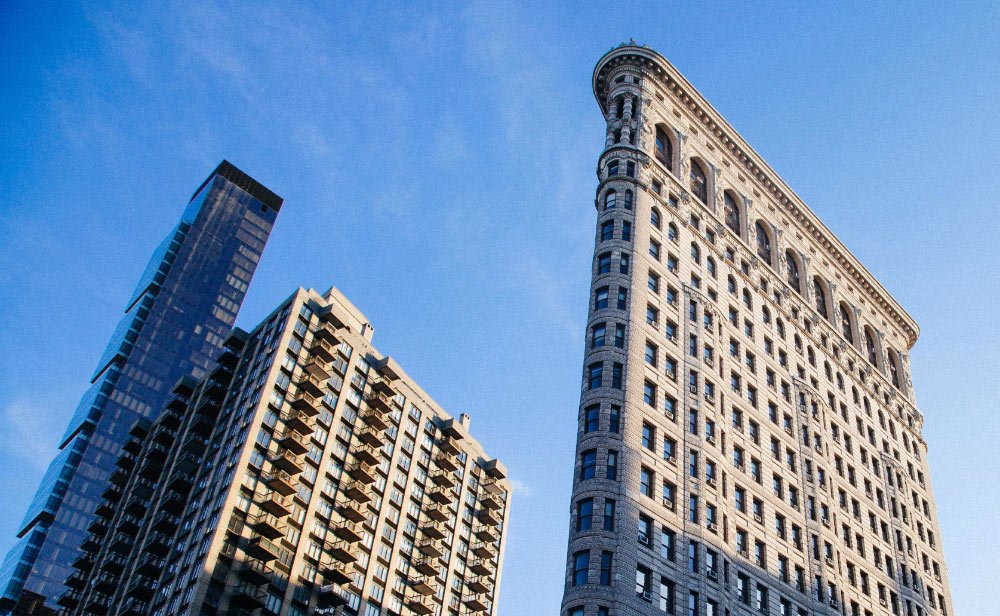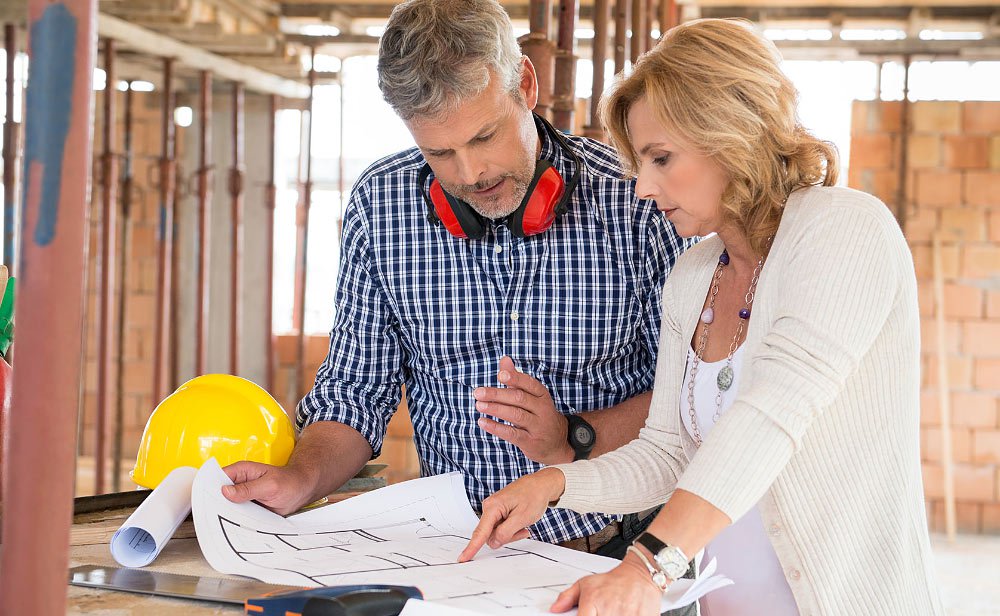Do You Have An Inspection or Environmental Concern We Can Help With?
Commercial Building Inspections
Since 1996 we are a Family Owned & Operated company that specializes in Home Inspections, Commercial Inspections, Termite inspections, Radon Gas Testing, Asbestos Surveys & Testing, Mold & indoor air quality testing, Oil tank sweeps, and Energy Audits throughout New Jersey and New York. Through years of experience we perform inspections and environmental testing on Residential homes, townhomes, condos, new construction, multifamily homes, commercial buildings, mixed use buildings, office building, industrial buildings, and medical buildings.
Buying a commercial building is one of the biggest decisions and investments you will ever make, and one you will live with for a long time. Although the process is very exciting it quickly becomes overwhelming.
While the building you have selected may appear to be just what you are looking for, how can you be sure there aren’t any serious deficiencies that can make your investment a costly one.

ortunately, you do not have to face this decision alone. We at C.M. Burrows Inc. encourage you to join us during the visual inspection and we will point out and explain any problems, as well as the good features of the property.
Our company is dedicated to providing you with valuable information about your building. We thoroughly inspect all major components of the subject property to expose any deficiencies and advise you with proper recommendations. Through years of experience we perform commercial inspections and environmental testing on commercial buildings, mixed use buildings, office buildings, industrial buildings, and medical buildings.

In today’s demanding real estate market place, C.M. Burrows Inc. delivers customized reports that are accurate and easy to understand.
The easy-to-understand line item summary page and detailed photo image page save valuable time and makes the report easy to understand
Home Inspection Services
Buying a house is one of the biggest decisions and investments you will ever make, and one you will live with for a long time. Although the process is very exciting it quickly becomes overwhelming.
While the home you have selected may appear to be just what you are looking for, how can you be sure there aren’t any serious deficiencies that can make your investment a costly one.

Fortunately, you do not have to face this decision alone. We at C.M. Burrows Inc. encourage you to join us during the visual home inspection and we will point out and explain any problems, as well as the good features of the property.
Our company is dedicated to providing you with valuable information about your new home. We thoroughly inspect all major components of the subject property to expose any deficiencies and advise you with proper recommendations. Through years of experience we specialize in the home inspections and home energy audits along the Gold Coast of Hudson and Bergen Countys focusing on residential homes, townhomes, condos, new construction, multifamily homes, and commercial buildings.

In today’s demanding real estate market place, C.M. Burrows Inc. delivers customized reports that are accurate and easy to understand.
The easy-to-understand line item summary page and detailed photo image page save valuable time and makes the report easy to understand.
Termite/Wood Destroying Insect Inspections
Wood destroying insects include: termites, carpenter ants, carpenter bees, and wood boring beetles.
The inspector does not have to see live insects to call a structure infested based upon visible evidence. Based upon the education and experience of an inspector, evidence of termite / WDI activity goes beyond seeing live insects. Termite mud / shelter tubes that are undisturbed and wings without any sign of treatment are just two of the signs which may lead an inspector to consider a structure infested.
You may find termite mud / shelter tubes along your foundation, near your pipes, in your crawlspace, in your attic or around other access points to your home. Also called shelter tubes, mud tubes are like covered highways termites use to traverse open, exposed spaces like concrete footers. They can’t go through these obstacles, so they build highways over or around them.
Mud tubes are made of soil, wood cellulose and other particulate matter. Termites dehydrate quickly, so they need the protection of an enclosed environment to maintain the humidity levels they need to survive. The tubes also protect them from predators. Mud tubes are about the thickness of a drinking straw or pencil and look like encrusted, dried dirt.
Termites in Mulch
There is no question that termites in mulch are a common occurrence. Mulch is a product of wood and the cellulose is excellent food for termites. Hardwood bark seems to be less attractive than softer woods such as pine nuggets. The moisture, food source, and protection of the mulch make ideal conditions for the survival of termites.
Mold & Indoor Air Quality Testing
C.M. Burrows Inc. provides mold testing and inspections throughout the state of New Jersey and helps homeowners and Building owners determine if Mold is present. C.M. Burrows Inc. is experienced in performing mold inspections, moisture tracking, and testing in residential homes, new construction, renovations, and commercial buildings.
What Is Mold?
Molds are micro-organisms that are decomposers of dead organic materials. The spores and hair-like bodies of individual mold colonies are too small for us to see without a microscope. When a lot of mold is growing on a surface, it often appears, black, blue, or green. The color of mold is determined by the type and is influenced by the nutrient source, surface substrate and age of the colony.
Mold needs water to grow. Mold also needs a food source, oxygen and a temp. between 40 degrees and 100 degrees. Mold grows on wood, paper, drywall, and other materials made from wood. Mold prefers damp or wet material. Also high humidity makes enough moisture available to make surfaces damp enough for mold to grow.
Why should I consider having a Mold test?
Building materials which have become water damaged due to roof leaks, plumbing leaks, excessive permeation through exterior brick, and other reasons may support mold/fungal and/or bacterial growth. The presence of such species may pose a nuisance and/or health hazard to homeowners and building occupants. C.M. Burrows Inc. conducts sampling and inspection of the air and water media in a discreet manner so that any microbiological species present may be identified.
Hiring A Professional Mold Inspector
The mold inspection will include a complete visual examination and the careful collection of air samples, tape samples, swab samples, and lab analysis of samples. If mold is present, the inspector should provide a written evaluation describing the mold type, locations, levels, and give recommendations for correction or prevention.
Asbestos Testing
C.M. Burrows Inc. is a New Jersey AHERA Asbestos inspection company that provides asbestos inspections, asbestos surveys for Pre-demolition, and asbestos sampling throughout the state of New Jersey and helps homeowners, contractors, and Building owners determine if asbestos is present. The inspection will include a complete visual examination for asbestos containing materials, the careful collection of ACM, and lab analysis of ACM samples. This will especially help prior to renovation or construction activities that disturb suspect asbestos. Following the asbestos survey C.M. Burrows will provide a comprehensive report with findings that include locations, sample results, and quantities of all asbestos containing material.
The State of New Jersey’s Department of Community Affairs (DCA) administers/enforces asbestos regulations in the state through the Uniform Construction Code. In January 2012, the DCA issued a directive to all local building code officials within the state not to issue a demolition permit without the completion and documentation of an asbestos pre-demolition survey. This is applicable to both residential and commercial structures.
What Is Asbestos?
Asbestos is a mineral fiber. It can be positively identified only with a special type of microscope. There are several types of asbestos fibers. In the past, asbestos was added to a variety of products to strengthen them and to provide heat insulation and fire resistance
Why should I consider having an asbestos test?
Up Until the 1980s, many types of building products and insulation materials used in homes contained asbestos.
The following are just some of the materials in the home that can contain asbestos: Popcorn Acoustical Ceiling, Soundproofing, Acoustical Ceiling Tile, Attic insulation, Vermiculite, Hot water or steam Pipe Insulation, Thermal Insulation (blow-in, bat, or spray-on), Vinyl Floor Tile, Linoleum Sheet Flooring, Floor Tile Mastic, Wallboard Mud, Plaster Skim Coat, Wallboard (rare), Siding, Municipal Water or Sewer Pipes, Roll-On Roofing, Window Glazing, Woodstove, Furnace, or Oven Door Gaskets, Fireproofing, Grout
From studies of people who were exposed to asbestos we know that breathing high levels of asbestos fibers can lead to an increased risk of: lung cancer; mesothelioma, a cancer of the lining of the chest and the abdominal cavity; and asbestosis, in which the lungs become scarred with fibrous tissue.
Hiring A Professional Asbestos Inspector
Only a trained AHERA Asbestos inspector can take samples of suspect ACM in New Jersey. C.M. Burrows Inc. helps homeowners, contractors, and Building owners determine if asbestos is present. Following the asbestos survey C.M. Burrows will provide a comprehensive report with findings that include locations, sample results, and quantities of all asbestos containing material. If asbestos is present, the inspector should provide a written evaluation describing its location and give recommendations for correction or prevention.
Indoor Air Quality-VOCs
There are many possible sources for poor indoor air quality and High Voc levels in a commercial building or residential home. There are several types of air-contaminating products and materials that may present. The Contamination sources are divided into three main source groups: Building-Related Sources, Mixed Building and Lifestyle Sources, and Lifestyle Sources.
Building Related Sources:
- Coatings (Paints, Varnishes, etc.)
- PVC Cement
- HFCs and CFCs (FreonsTM)
Mixed Building and Lifestyle Sources
- Building Materials-Toluene Based
- Gasoline
- Fuel Oil, Diesel Fuel, Kerosene
- Moth Balls (Naphthalene Based)
- Moth Crystals (p-Dichlorobenzene Based)
- Light Hydrocarbons
- Light Solvents
- Methylene Chloride
Lifestyle Related Sources
- Personal Care Products
- Alcohol Products
- Odorants and Fragrances
- Dry Cleaning Solvents
- Medicinals
Mold / MVocs are caused from Building materials which have become water damaged due to roof leaks, plumbing leaks, excessive permeation through exterior brick, and other reasons may support mold, fungal, and bacterial growth. The presence of such species may pose a nuisance and/or health hazard to homeowners and building occupants.
Mold needs water to grow. Mold also needs a food source, oxygen and a temp. between 40 degrees and 100 degrees. Mold grows on wood, paper, drywall, and other materials made from wood. Mold prefers damp or wet material. Also high humidity makes enough moisture available to make surfaces damp enough for mold to grow. C.M. Burrows Inc. conducts sampling and inspection of the air and water media in a discreet manner so that any microbiological species present may be identified.
Health Effects of poor indoor air quality and High VOC Levels-Exposure
The presence of chemicals-Vocs in your home can cause a wide range of problems, ranging from an unpleasant odor to physical symptoms (burning and irritation in the eyes, nose, and throat; headaches; nausea; nervous system effects; severe illness; etc.). Anyone with respiratory issues like asthma and allergies, as well as children, the elderly, and pregnant women are more susceptible to poor indoor air quality than healthy individuals.
CM Burrows Inc provides the most advanced and trusted air testing sampling methods to identify poor indoor air quality and High VOC Levels in commercial buildings and residential homes.
Formaldehyde Testing
There are many possible sources for formaldehyde in a home or building, although building products typically make up a large proportion of the concentration. Any recent renovation or new materials brought into the home is likely to increase the formaldehyde levels.
Sources of Formaldehyde:
- Products that contain urea-formaldehyde (UF) resins
- particleboard, hardwood plywood paneling, medium density fiberboard
- Products that contain phenol-formaldehyde (PF) resins (lower concentrations of formaldehyde than UF resins)
- softwood plywood, flake or oriented strand board
- Pre-finished engineered flooring
- Insulation
- Glues and adhesives
- Paints and coatings
- Textiles
- Disinfectant cleaning products and soaps
- Preservatives
- Personal care products, especially certain hair products
- Cosmetics
- Pet care products
- Bactercides and fungicides
- Combustion byproduct (burning)
- Tobacco smoke and fuel-burning appliances
Health Effects of Formaldehyde Exposure
Health effects vary depending on the individual. Common symptoms of acute exposure include irritation of the throat, nose, eyes, and skin; this irritation can potentially exacerbate asthma symptoms and other respiratory illnesses. Long term, or chronic, exposure may also cause chronic runny nose, chronic bronchitis, and obstructive lung disease. In 2004, the International Agency for Research on Cancer (IARC) reclassified formaldehyde from “probably carcinogenic to humans” to “carcinogenic to humans” related to nasopharyngeal cancer. Since many factors are involved in the development of cancer, no definitive “safe level” of exposure has been established. The best way to reduce the risk of cancer is to limit exposure.
CM Burrows Inc. provides the most advanced and trusted air testing sampling methods to identify Formaldehyde sources and levels in commercial buildings and residential homes.
Oil Tank Search
C.M. Burrows Inc. provides Oil Tank Search throughout the state of New Jersey and helps homeowners and Building owners determine if an oil tank is present. C.M. Burrows Inc. is experienced in performing an oil tank search, and testing in residential homes, new construction, renovations, and commercial buildings.
Why should I consider having an Oil Tank Search?
Many homes constructed were initially heated with oil. After a natural gas conversion was made underground oil tanks were forgotten about or never completely removed. We highly recommend that an Oil Tank Search be conducted to determine if an abandoned heating oil tank remains on the property.
Warning signs of an undisclosed buried oil tank:
- Home or building was constructed prior to 1975 and has natural gas heat.
- An above ground oil tank provides fuel for heat or hot water.
- Pipes are visible sticking up from the ground or driveway at the property.
- Extra lines are entering the basement from the outside and do not appear to be productive.
Hire a Professional to Perform the Oil tank Search:
The technician will first look outside and inside the home for clues that may indicate a past or current oil tank…i.e. the presence of an oil fired furnace, oil burner shut off switches, pipes, or lines exiting the foundation/ floor, patches indicative of oil lines etc. Second, utilizing electronic metal detection equipment, the technician will walk the grounds searching for any buried metallic objects. The detection equipment utilized is capable of locating metallic objects. This type of detection and visual inspections inside the home helps determine the existence of oil or storage tanks that may otherwise go undetected. If a tank is discovered, you will receive a written report detailing the location of the tank. Our report includes detailed findings and recommends the steps you should follow to avoid inheriting a potential environmental problem.
Radon Gas Testing
Continuous Radon Monitors & Charcoal Canisters are used when testing for radon gas.
Radon is a colorless, odorless and tasteless naturally occurring radioactive gas that seeps from soil into the home through cracks and other opening in the foundation or walls in contact with the soil.

Exposure to radon causes lung cancer. The National Academy of Sciences estimates that radon causes between 15,000 – 22,000 lung cancer deaths each year in the U.S. Radon gas presents one of the highest health risks we face in our daily lives.
The New Jersey Department of Environmental Protection (NJDEP) recommends that all homeowners test their homes for radon.
Radon gas measurement is easy and should be considered by the buyer as part of any real estate transaction. At the time of the contract of sale, New Jersey law (N.J.A.C. 26:2D-73) requires that the seller provide the buyer with a copy of the results of any radon testing and information on any remediation that has been conducted in the home.
If you are testing a house that you are considering purchasing, you must use the services of a NJDEP certified radon tester. All professionals who perform radon tests or mitigations in New Jersey must be certified. They must demonstrate sufficient education and experience, take NJDEP approved courses in radon testing or mitigation techniques, and pass a written examination.
The NJDEP recommends taking steps to reduce radon levels if the gas concentration in the lowest liveable level of the house is four picocuries per liter (4 pCi/L) or more. A picocurie is a measure of radioactivity. This will markedly decrease the risk of developing lung cancer caused by radon exposure.
 The most common method of radon gas remediation is sub-slab ventilation, which uses a fan to draw the radon gas out from below the slab or foundation, thereby preventing its entry into the house. Based on New Jersey data, this method is effective in almost every case in reducing radon gas levels to levels lower than 4 pCi/L. The cost is typically about $1,200, although it can range from $500 to $2,500.
The most common method of radon gas remediation is sub-slab ventilation, which uses a fan to draw the radon gas out from below the slab or foundation, thereby preventing its entry into the house. Based on New Jersey data, this method is effective in almost every case in reducing radon gas levels to levels lower than 4 pCi/L. The cost is typically about $1,200, although it can range from $500 to $2,500.
Get A Quote Today
Fill out the form below and we will get back to you within one working day.
